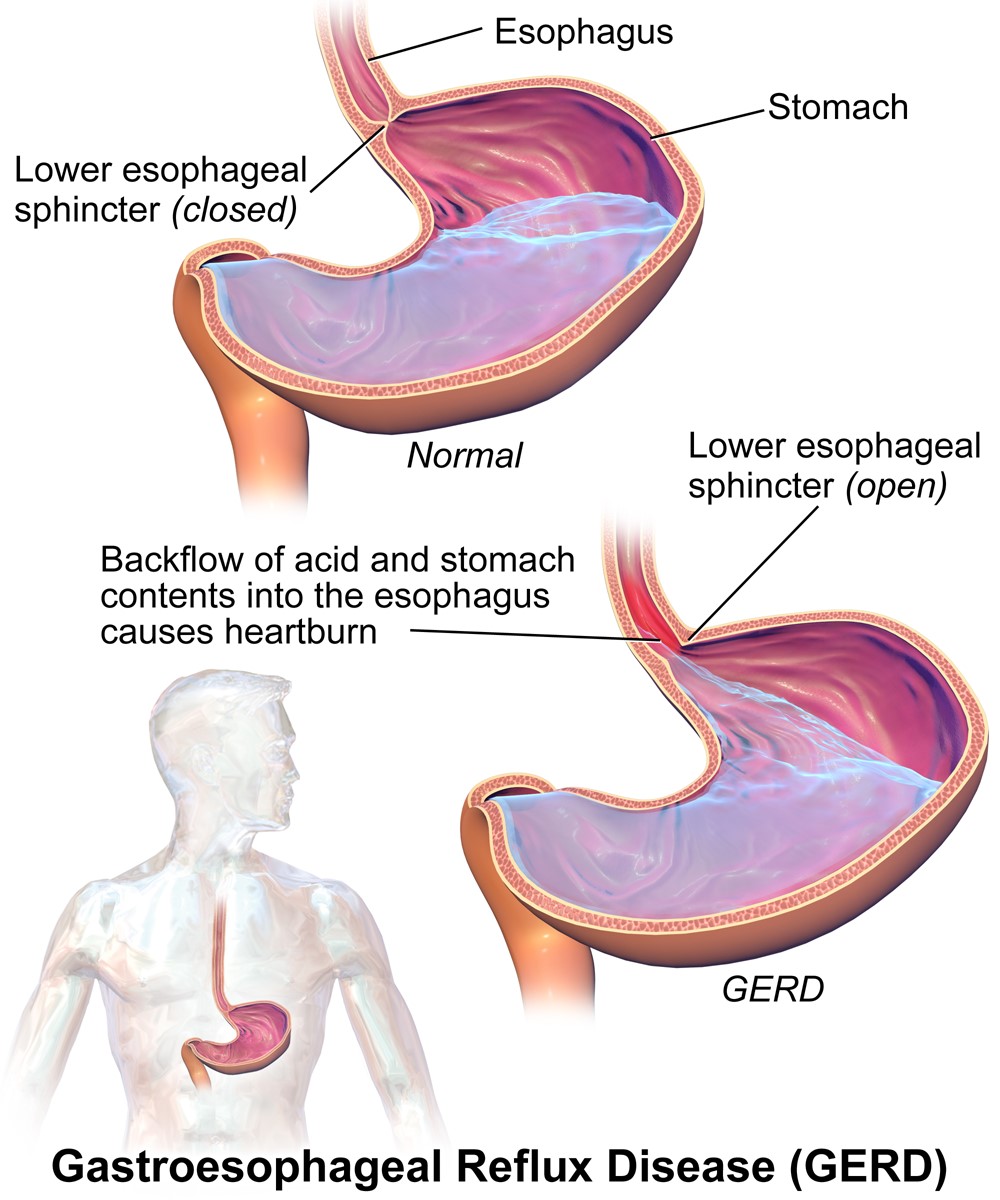Reglan, Metoclopramide Injection
- Introduction
- What is Reglan Metoclopramide
- How It Works
- Dosage and Administration
- Uses
- Off-label Use
- Composition
- Common Side Effects
- Side Effects
- Interaction
- Warning
- Contraindication
- Careful Administration
- Important Precautions
- Administration to Elderly
- Administration to Pregnant Women and Nursing Mothers
- Administration to Children
- Overdosage
- Storage
- Handling Precautions
Introduction
Reglan, which is also referred to as Metoclopramide Injection, is a medicinal substance that has a wide range of therapeutic uses. Utilizing these types of drugs plays a role in today's medical field, and both healthcare providers and patients must comprehensively understand their intricacies.
What is Reglan Metoclopramide
Reglan, also known as Metoclopramide is a medication used in the medical field to help manage conditions such as gastroesophageal reflux disease (GERD) and gastroparesis. It is quite effective, in reducing feelings of nausea and vomiting that can occur as effects of certain chemotherapy drugs or after undergoing surgery.

Metoclopramide
How It Works
Mechanism of action of Metoclopramide in the body
Metoclopramide works in ways mainly by blocking the dopamine D2 receptors. This action helps to reduce feelings of nausea and vomiting by inhibiting these receptors in the chemoreceptor trigger zone found in the central nervous system.
Additionally, it has some affinity for receptors that can increase the release of acetylcholine and may also have direct effects on the gastrointestinal tract through its muscle-relaxing properties.
How it affects gastrointestinal motility
When it comes to the movement of the system, Metoclopramide is known for its ability to speed up the emptying of the stomach and increase muscle tone in the lower esophageal sphincter. It does this by;
- Strengthening the strength of contractions in the stomach
- Improving the regularity of contractions in the jejunum
- Speeding up how quickly the stomach empties, into the small intestine.
As a result, these effects help food move through the stomach faster, reducing the likelihood of reflux.
Dosage and Administration
Standard dosing guidelines
To achieve the results of your therapy, it is crucial to follow the recommended dosing guidelines. Usually, adults are advised to take 10mg to 15mg three to four times a day before meals and at bedtime. The specific dosage may differ depending on the condition and how the patient responds to the treatment.
Adjustments for specific patient populations
Some groups of patients may need adjustments in their medication dosage to achieve the results with minimal side effects.
- For example, elderly patients or those with kidney problems might require a dose.
- Sometimes, the dosage is typically customized according to body weight and the specific condition being treated.
- Patients with liver issues might also need modifications because their bodys ability to process drugs can be affected.
It's always important to consult healthcare professionals before making any changes to the dosage.
Route of administration
Metoclopramide can be administered in many ways. It is commonly taken orally as tablet injections offer an effect, especially in urgent medical situations. The Intravenous (IV) or intramuscular (IM) injection routes are commonly used, with the IV method being preferred for its fast-acting antiemetic properties.
Uses
Primary indications for Reglan
Reglan, a respected therapeutic agent, has found its place in the field of medicine due to its diverse range of applications. This medication goes beyond providing relief from symptoms and actually works to improve the underlying physiological issues.
- One of its uses is in treating gastroesophageal reflux disease (GERD)(1), a condition where stomach contents flow back into the esophagus, causing symptoms like heartburn and regurgitation.
- Additionally, Reglan serves as a solution for gastroparesis(2), a disorder characterized by delayed stomach emptying. Patients with this condition often experience nausea, vomiting, and bloating.
- Furthermore, Reglan plays a role in alleviating postoperative nausea and vomiting (PONV)(3), which is a common but debilitating complication following surgeries.

Gastroesophageal reflux disease
1. NCBI - Gastroesophageal reflux disease (GERD)
2. National Institute for Health - Metoclopramide in the treatment of diabetic gastroparesis
Gastrointestinal disorders treated with Metoclopramide
Metoclopramide, which is the component in Reglan, is a remedy for various digestive issues. Its main action as a blocker of dopamine receptors allows it to regulate and improve the movement of the system.
- People who suffer from Chronic indigestion or dyspepsia, which often presents as persistent or recurring pain in the upper abdomen, find relief in using Metoclopramide.
- Additionally, it is used to manage nausea and vomiting caused by chemotherapy. This ability to prevent nausea is crucial as it helps patients stick to chemotherapy treatments without being burdened by debilitating sickness.
- Metoclopramide is also utilized during bowel intubation, a procedure where a tube is inserted through the nose or mouth into the small intestine. It helps speed up this procedure by promoting bowel movement.
With its range of applications, Metoclopramide proves its significant value in gastrointestinal pharmacotherapy as a versatile solution for many ailments.
Off-label Use
Situations where Reglan might be prescribed outside its primary indications
Reglan's versatility extends beyond its indications, leading clinicians to explore its use in various scenarios. While it is commonly prescribed for disorders, doctors have also found it beneficial in treating other conditions. Some examples of off-label use include;
1. Migraine Management: Reglan's antiemetic properties make it a valuable addition to migraine treatment, often used alongside pain relievers to alleviate symptoms and prevent associated nausea.
2. Radiological Procedures: In diagnostic procedures that require visualization of the bowel, Metoclopramide can aid gastric emptying, improving the clarity of imaging results.
3. Lactation: An interesting application of Reglan is its ability to potentially increase milk production in breastfeeding mothers due to its effect on levels.
Existing research on its efficacy in off-label situations
Scientific investigation has consistently emphasized the importance of research, even when it involves using established medications in ways not originally intended. The extended usage of Metoclopramide has also been subject to this examination. Existing research offers insights on this topic.
- Numerous studies, particularly randomized controlled trials, have shed light on the potential advantages of using Reglan for relieving migraines. Patients who are given Metoclopramide often report relief and reduced recurrence rates.
- Furthermore, several clinical evaluations have confirmed its effectiveness in improving images especially those related to gastrointestinal studies. Its ability to speed up gastric emptying ensures disruption during imaging procedures.
- However there is debate concerning its use as a galactagogue. While some studies support its effectiveness in enhancing milk production others express concerns about side effects and the actual impact it has on lactation.
Healthcare professionals must stay informed about the research findings and ensure that any off-label use aligns with the balance between therapeutic risks and benefits while prioritizing patient well-being.
Composition
Active ingredients and their proportions
Reglan, also known as Metoclopramide, is a contender, in the field of gastrointestinal treatments. Its effectiveness mainly relies on an ingredient called Metoclopramide Hydrochloride. This crucial compound, usually found in tablet or dose forms ranging from 5mg to 10mg, plays a role in its therapeutic effects by acting as an antagonist to dopamine D2 receptors and improving gastric motility.
Inactive ingredients and their roles
In addition to the components a combination of other ingredients is used to enhance the stability, effectiveness and overall experience for patients. These additional ingredients might not have a pharmacological effect but still play important roles;
Binders; Substances like microcrystalline cellulose are included to ensure that the tablet stays intact and holds together.
- Disintegrants; Ingredients such as croscarmellose sodium help the tablet dissolve quickly after it is ingested ensuring that the active ingredient is released in a timely manner.
- Preservatives: These prevent microbial contamination and ensure that the drug remains safe and effective throughout its shelf life.
- Colorants & Coatings; They serve to improve the appearance of the tablet and make it easier for patients to swallow.
The harmonious interaction between these inactive ingredients ultimately determines how effective the drug is and how compliant patients are, with taking it.
Common Side Effects
List of frequently reported side effects
Similar, to any medication Reglan has its range of side effects. While most patients handle it well, some individuals may experience the following adverse reactions;
- Feeling drowsy; A sense of being sedated or less alert.
- Diarrhea: Frequent episodes of loose stools.
- Restlessness; An increased sense of agitation or nervousness.
- Fatigue; A noticeable feeling of tiredness. Decreased energy levels.
Management and mitigation of common side effects
Although adverse reactions may cause concern, they can often be effectively managed through interventions.
- For instance, if patients experience drowsiness or fatigue, it is advised that they avoid activities that require alertness, such as driving. It is also recommended for them to establish a resting routine.
- In the case of diarrhea, ensuring hydration and making dietary modifications can help alleviate the symptoms. In severe cases, healthcare professionals might consider prescribing antidiarrheal agents.
- If patients experience restlessness, it may be beneficial to adjust the dosage of the medication or employ relaxation techniques. In some cases, healthcare professionals might explore the possibility of prescribing additional medications alongside the current treatment.
Maintaining communication with healthcare professionals is crucial for ensuring optimal management of any side effects that may arise.
Side Effects
Less common but significant side effects
Although the side effects mentioned above are common there are also some frequently observed but still important adverse reactions. These include the following;
1. Tardive Dyskinesia; muscle movements, particularly facial grimacing or thrusting of the tongue.
2. Neuroleptic Malignant Syndrome; A condition characterized by symptoms such as fever, muscle stiffness, and changes in mental state.
3. Galactorrhea; production of milk caused by the impact of the drug, on prolactin levels.
It's essential to be aware of these side effects as they can have significant consequences.
Potential long-term effects and monitoring
Continuously monitoring patients who use Metoclopramide for a time is important because there might be potential long-term effects. People who are exposed to it for a period are at a higher risk of developing tardive dyskinesia, which is a condition that may not be reversible.
It's crucial to evaluate the patient's neurological condition. To prevent complications like galactorrhea or gynecomastia it's important to keep a close eye on prolactin levels and monitor them continuously.
Evaluating the heart health of patients is also essential. This includes conducting electrocardiograms (ECGs) to detect any significant side effects such, as QT interval prolongations. Regular health checkups play a role in early detection and intervention ensuring the well-being of the patient.
Interaction
Common medications that may interact with Metoclopramide
Metoclopramide, an established pharmaceutical drug used in gastrointestinal treatments, doesn't work in isolation when it comes to therapy. Its effectiveness and safety can be influenced by the medications it interacts with. Notable interactions include;
- Antipsychotics: Using drugs like haloperidol alongside Metoclopramide can increase the risk of symptoms.
- MAO inhibitors: Combining medications like phenelzine or tranylcypromine with Metoclopramide can amplify the chances of hypertensive crises.
- Anticholinergic Drugs: Taking these drugs concurrently with Metoclopramide can counteract its effects on gastrointestinal motility.
- Narcotic Analgesics: Medications, like morphine, may slow down gastric emptying, which could undermine the therapeutic benefits of Metoclopramide.
Remember to consult a healthcare professional before starting or modifying any medication regimen.
Food and lifestyle interactions to be aware of
Aside from the interactions with medications, the effectiveness and safety of Metoclopramide are influenced by various factors related to diet and lifestyle;
- Alcohol: Consuming alcohol while taking Metoclopramide may intensify its effects, making it difficult to perform tasks that require alertness.
- Caffeine: Since Metoclopramide speeds up gastric emptying, it may affect the absorption of caffeine, potentially altering its stimulating effects.
- Meal Timing: Taking Metoclopramide 30 minutes before meals can optimize its effects on motility.
Being aware of lifestyle choices and dietary considerations is important, for maximizing the benefits and ensuring safety when using Metoclopramide.
Warning
Situations where extreme caution is required
Metoclopramide, like any other medication, needs to be used carefully in specific situations. When considering its use during pregnancy in the first trimester, it is important to weigh the potential benefits against any risks involved.
In the population, particularly in newborns, there may be an increased sensitivity to the side effects of this medication. Additionally, in individuals who may have age-related impairment of kidney or liver function, dosage adjustments might be necessary due to changes, in drug metabolism.
Potential severe reactions and their onset
Although Metoclopramide is usually well tolerated, there are instances where severe reactions can occur, which may require medical attention. One such reaction is Tardive Dyskinesia, characterized by movements of the face or tongue that can be irreversible and may appear after prolonged use.
Another serious reaction is Neuroleptic Malignant Syndrome, which presents symptoms like fever, muscle rigidity, and altered consciousness. In some cases, it is crucial to discontinue the drug promptly. Being vigilant and responding promptly can help minimize complications.
Contraindication
Specific conditions or situations where Metoclopramide should not be used
Metoclopramide has situations where it should not be used due to potential complications. These include:
1. Gastrointestinal Hemorrhage: The medication's ability to enhance motility can worsen bleeding in this condition.
2. Mechanical Bowel Obstruction: Encouraging motility, in some cases, can result in bowel perforation.
3. Epilepsy: Metoclopramide can lower the seizure threshold, which increases the likelihood of experiencing seizures.
It is crucial to consider these contraindications when prescribing or using metoclopramide for treatment.
Drug allergies and cross-reactivities
Although it is rare, some individuals may experience reactions when using Metoclopramide. Patients who are already aware of their hypersensitivity to this medication should avoid using it.
Additionally, there is a chance of cross-reactivity with other medications in the same category, although this is not very common. Therefore patients with known drug allergies should exercise caution when considering the use of Metoclopramide.
Careful Administration
Administering Metoclopramide in patients with other health conditions
When administering Metoclopramide to patients who are also dealing with health conditions, it is important to approach the situation with increased caution and care.
- Individuals who have conditions like Parkinson's' Disease should be particularly mindful as this medication may worsen their symptoms due to its dopaminergic antagonist properties.
- Metoclopramide could potentially affect heart rate and rhythm for those with cardiac disorders, so extra vigilance is required for individuals with pre-existing heart conditions.
- Patients with hepatic impairment should also be closely monitored as their metabolism and excretion of the drug may be affected, which could lead to a buildup of the medication in their system.
It is crucial to observe these patient groups in order to ensure that the treatment is effective, without any undesirable effects.
Monitoring and adjustment considerations
Regular monitoring enables dosage adjustments to achieve the best possible therapeutic results. It is important to take into account factors such as conducting periodic tests to assess kidney and liver function in order to tailor the doses accurately.
Additionally it is crucial to perform assessments for individuals who use the medication for an extended period of time, as this helps identify early signs of tardive dyskinesia.
Electrocardiographic evaluations should also be conducted to keep a check on QT interval prolongations. By making adjustments based on these evaluations, we ensure that the risk-to-benefit ratio remains favorable.
Important Precautions
Precautions before starting therapy
When considering starting Metoclopramide treatment, it is essential to evaluate the patient's condition. Before beginning the therapy;
- Gather a medical history to identify any potential reasons not to proceed.
- Inform patients about possible side effects and ensure they fully understand before giving their consent.
- Conduct initial assessments, such as neurological and cardiac evaluations, which can provide valuable information.
It is crucial to have informed and prepared patients for a successful therapeutic process.
Things to monitor during therapy
Continual therapy requires monitoring. It is important to keep an eye on symptoms to ensure that the medication is working effectively. Additionally, we should be vigilant for any signs that may indicate potential adverse effects.
Recognizing and intervening in any emergent allergic reactions or hypersensitivities is crucial. This proactive approach can help prevent complications.
Administration to Elderly
Adjustments in dosing or administration
The elderly population, with its physical characteristics, may need special attention. Considering the possibility of age-related decline in kidney or liver function, it may be wise to start with doses.
Increasing the time between doses can help prevent medication build-up in the body. For those who have difficulty swallowing or have reduced intake, liquid solutions rather than tablets could be a more suitable option.
Special considerations and potential risks
Elderly individuals may experience increased sensitivity to sedation or extrapyramidal symptoms caused by medications. It is important to be cautious when administering drugs to those, with a history of arrhythmias.
It is crucial to evaluate concurrent medications to avoid any harmful interactions. The well-being of patients requires a balanced approach that combines pharmacological expertise with principles of geriatric care.
Administration to Pregnant Women and Nursing Mothers
Potential risks to fetus or infant
The well-being of both mother and baby is of importance. While it's possible for Metoclopramide to pass through the placenta, animal studies have not definitively shown any effects on fetal development. However, there is research available from human studies.
Newborns exposed to Metoclopramide during the trimester may experience symptoms such as involuntary muscle movements or withdrawal after birth. Although small amounts of Metoclopramide are excreted in breast milk, there is no evidence suggesting any negative impact, on the nursing baby.

Pregnant woman
Recommendations for use during pregnancy or lactation
Metoclopramide should only be given to women if it is absolutely necessary and if the benefits of taking the medication outweigh the potential risks. While breastfeeding mothers should be aware of any symptoms or reactions in their baby and consult with a healthcare provider. The decision to continue breastfeeding or stop it should consider how important the medication is, for the mother.
Administration to Children
Determining the dosage of Metoclopramide for pediatric patients requires a careful balance of accuracy and prudence. Generally, the doses are adjusted according to the child's body surface area or weight. In the case of children between 1 and 14 years, the recommended dose typically falls within the range of 0.1 to 0.15 mg/kg administered up to four times a day. When it comes to neonates and infants, it is crucial to take an approach with dosing and closely monitor their response to ensure safe administration.
Special precautions and considerations
The unique pharmacokinetic and pharmacodynamic factors of the population should be taken into consideration. It is important to note that metoclopramide may have an impact on the nervous system in children due to its ability to cross the blood-brain barrier. Therefore, close neurological monitoring is necessary to identify any extrapyramidal symptoms. Collaborating with specialists will help tailor the treatment approach and prioritize the well-being of the child.
Overdosage
Symptoms of Metoclopramide overdose
Although rare, an overdose of Metoclopramide can have symptoms that require quick recognition and intervention. The signs of such an overdose may vary from subtle to noticeable. These can include;
1. Sedation: This is characterized by feeling drowsy or less alert. It is often the most obvious symptom.
2. Reaction: involves involuntary muscle movements, dystonic reactions, or stiffness.
3. Depression; It refers to a decrease in respiratory drive, which requires immediate medical attention.
4. Cardiac Arrhythmias; These are heart rhythms that can be detected through an electrocardiogram.
It's important to be aware of these symptoms in case of a Metoclopramide overdose and seek help promptly if needed.
Emergency management and antidotes
In the event of an overdose of Metoclopramide it is important to follow an approach for emergency management;
1. Immediately stop taking the drug.
2. Ensure that the airway is secure and there is ventilation and oxygen supply.
3. Administer activated charcoal within the hour to minimize absorption.
4. If there are any reactions, medications such as anticholinergic or antiparkinsonian agents can be given.
5. Continuously monitor the heart for any rhythms.
6. Although there is no antidote, for Metoclopramide overdose providing symptomatic and supportive care remains essential in managing the situation.
These steps should be taken to ensure management following a Metoclopramide overdose.
Storage
Ideal storage conditions for potency
To maintain the effectiveness of Metoclopramide, it is essential to follow specific guidelines for storing the medication. Keep it at a controlled room temperature, usually, between 20°C to 25°C. Avoid exposing the drug to direct sunlight or excessive heat sources.
It's important to store the medication in an environment as humidity can affect its quality. Always keep it in its container with a tightly sealed lid.
Shelf life and expiration considerations
Pharmaceuticals, although carefully manufactured, do not last forever in terms of their effectiveness. It is important to check the expiration date before administering or dispensing Metoclopramide. Expired medications do not lose their potency but can also become potentially harmful due to degradation products.
Make sure to inspect stored medication for any changes in appearance, consistency, or odor, even if it is still within the expiration date. By prioritizing the integrity of medication we ensure therapeutic outcomes and safeguard patient well-being.
Handling Precautions
Safe handling practices for healthcare providers
Those working in the healthcare field must follow procedures when dealing with Metoclopramide. It's important to wear gloves when handling or giving the medication especially if it's in form. Make sure to store the medication in a place where unauthorized individuals, children, or pets cannot access it.
Always follow the protocols set by your institution, for administering drugs, which includes checking doses and confirming patient identification.
Disposal recommendations
It is crucial for the well-being of the environment and society to have an approach to disposing of Metoclopramide or any other medication. Remember not to throw them in household trash, sinks, or toilets.
Whenever possible, make use of drug take-back programs or designated pharmaceutical disposal sites. In case such options are not available, you can consider mixing the medication with something sealing it in a plastic bag, and then disposing of it properly.
Responsible disposal helps prevent environmental impacts and reduces the risk of accidental exposure or misuse.


















